The document discusses the Rabin-Karp substring search algorithm. It defines the algorithm as a string search method that compares hash values rather than strings themselves, allowing the hash of the next text position to be efficiently computed from the current position's hash. The document provides an example application of the algorithm, explains its O(n+m) running time complexity, and lists applications such as bioinformatics and plagiarism detection.
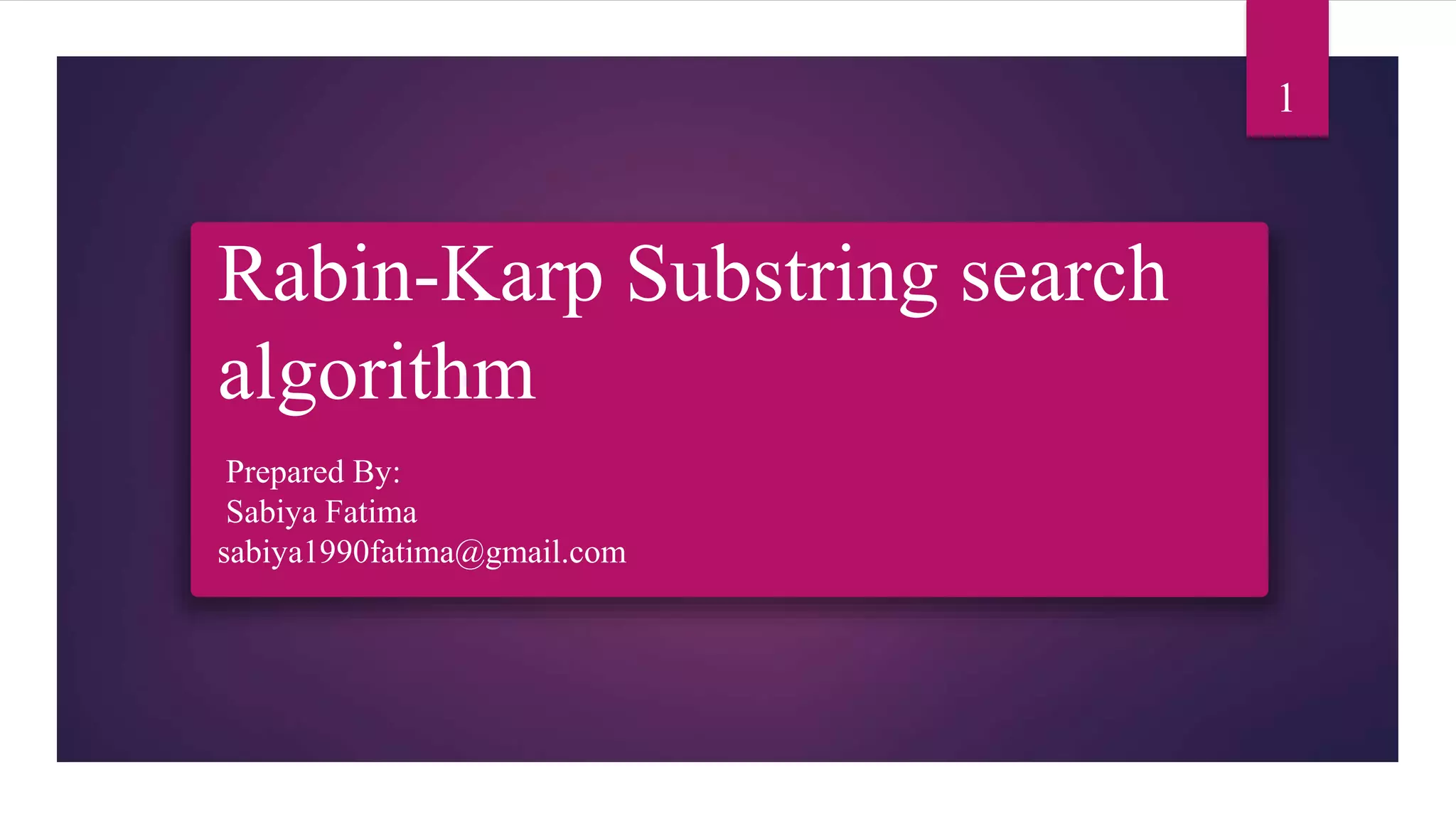
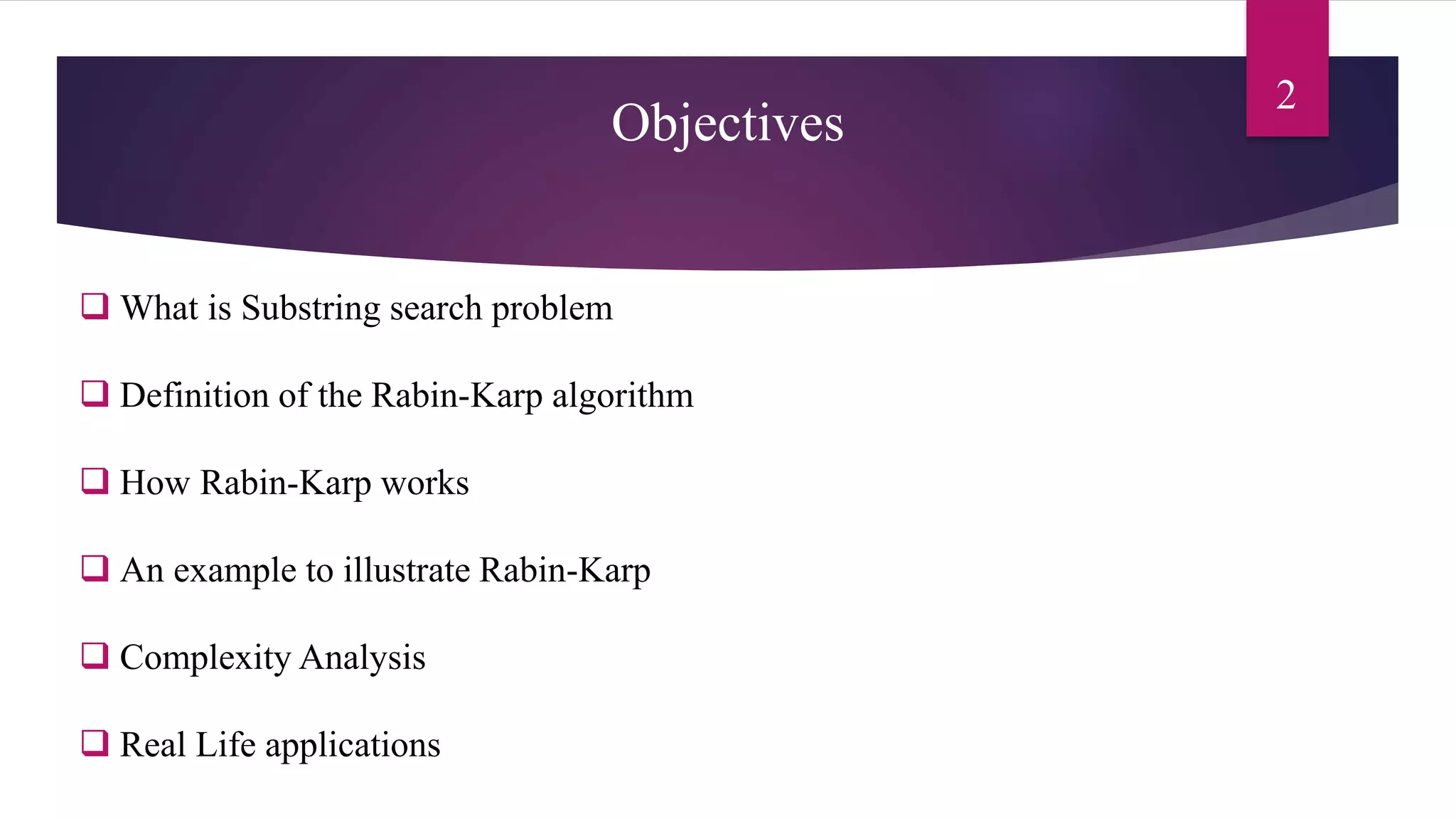
![What is Substring search Problem
3
We assume that the text is an array T [1..N] of length n and that the pattern is an array P [1..M]
of length m, where m << n.
We also assume that the elements of P and T are characters in the finite alphabet S.
(e.g., S = {a,b} We want to find P = ‘aab’ in T = ‘abbaabaaaab’)](https://image.slidesharecdn.com/sabiyarabincarpalgorithm-171228213732/75/Rabin-Carp-String-Matching-algorithm-3-2048.jpg)
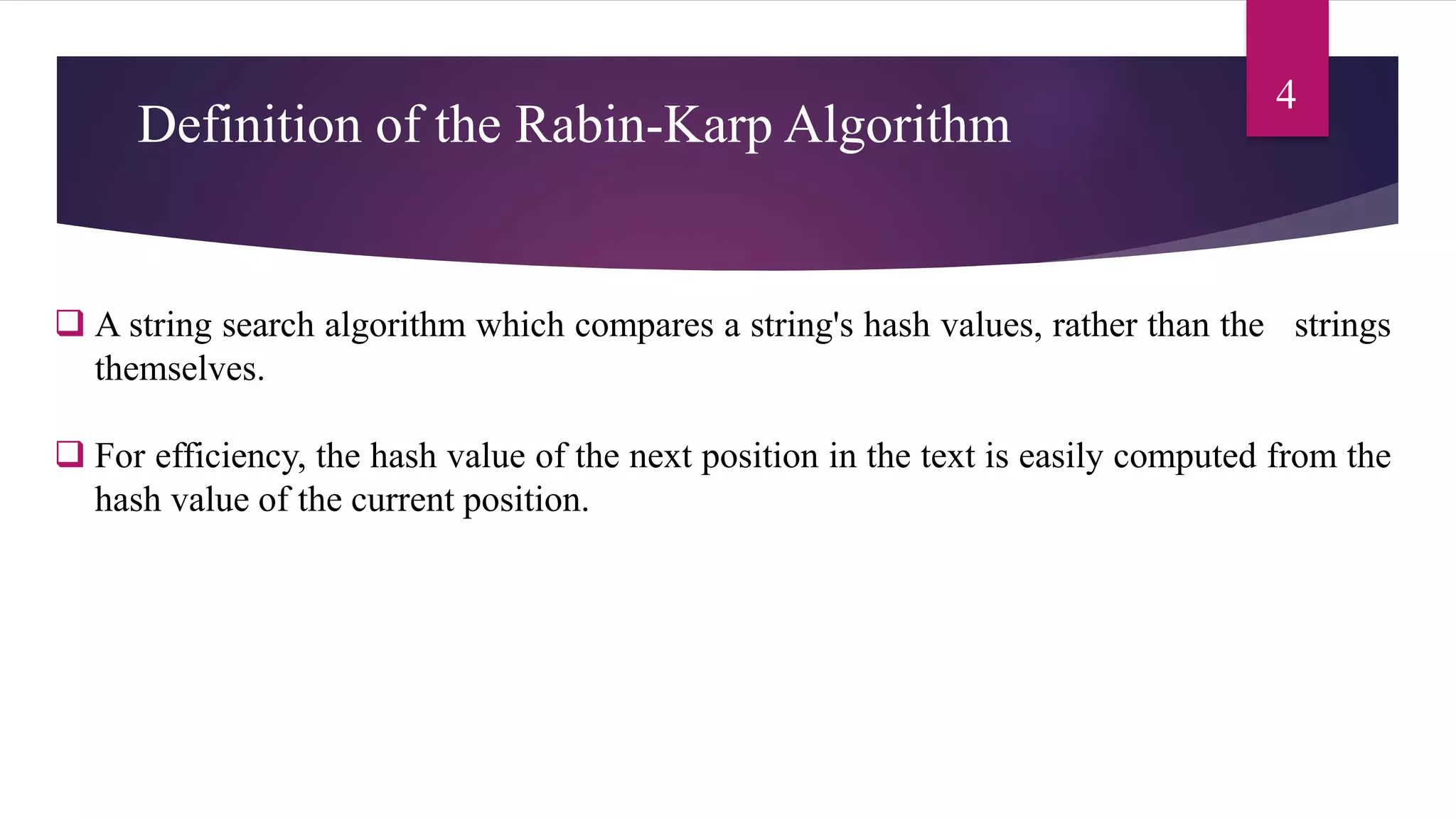
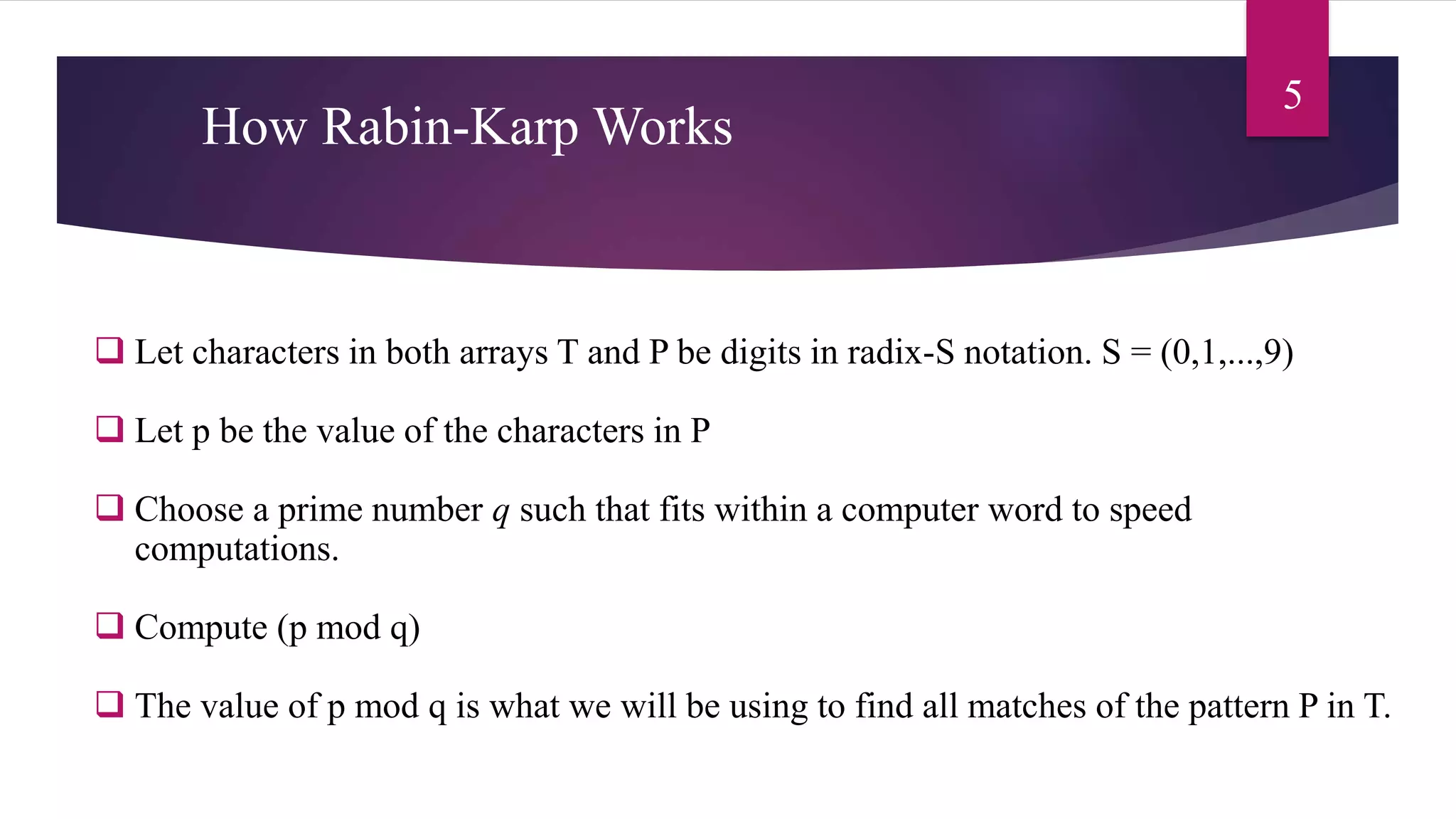
![How Rabin-Karp Works(Contd.)
6
Compute (T[s+1, .., s+m] mod q) for s = 0 .. n-m
Test against P only those sequences in T having the same (mod q) value
(T[s+1, .., s+m] mod q) can be incrementally computed by subtracting the high-order digit,
shifting, adding the low-order bit, all in modulo q arithmetic.](https://image.slidesharecdn.com/sabiyarabincarpalgorithm-171228213732/75/Rabin-Carp-String-Matching-algorithm-6-2048.jpg)
![Algorithm
7
RABIN-KARP-MATCHER(T,P,d,q)
1. n = T.length
2. m= P.length
3. h = d^(m-1) mod q
4. p = 0
5. t0 = 0
6. for i = 1 to m // preprocessing
7. p = (dp + p[i]) mod q
8. t0 = (dt0 + p[i]) mod q
9. for s = 0 to n-m // matching
10. if p == ts
11. if P[1 . . . . M] == T[ s+1 . . . . s+m]
12. print “Pattern occurs with shift” s
13. if s<(n + m)
14. ts+1 = (d(ts – T[s+1]h)+T[s+m+1]) mod q](https://image.slidesharecdn.com/sabiyarabincarpalgorithm-171228213732/75/Rabin-Carp-String-Matching-algorithm-7-2048.jpg)
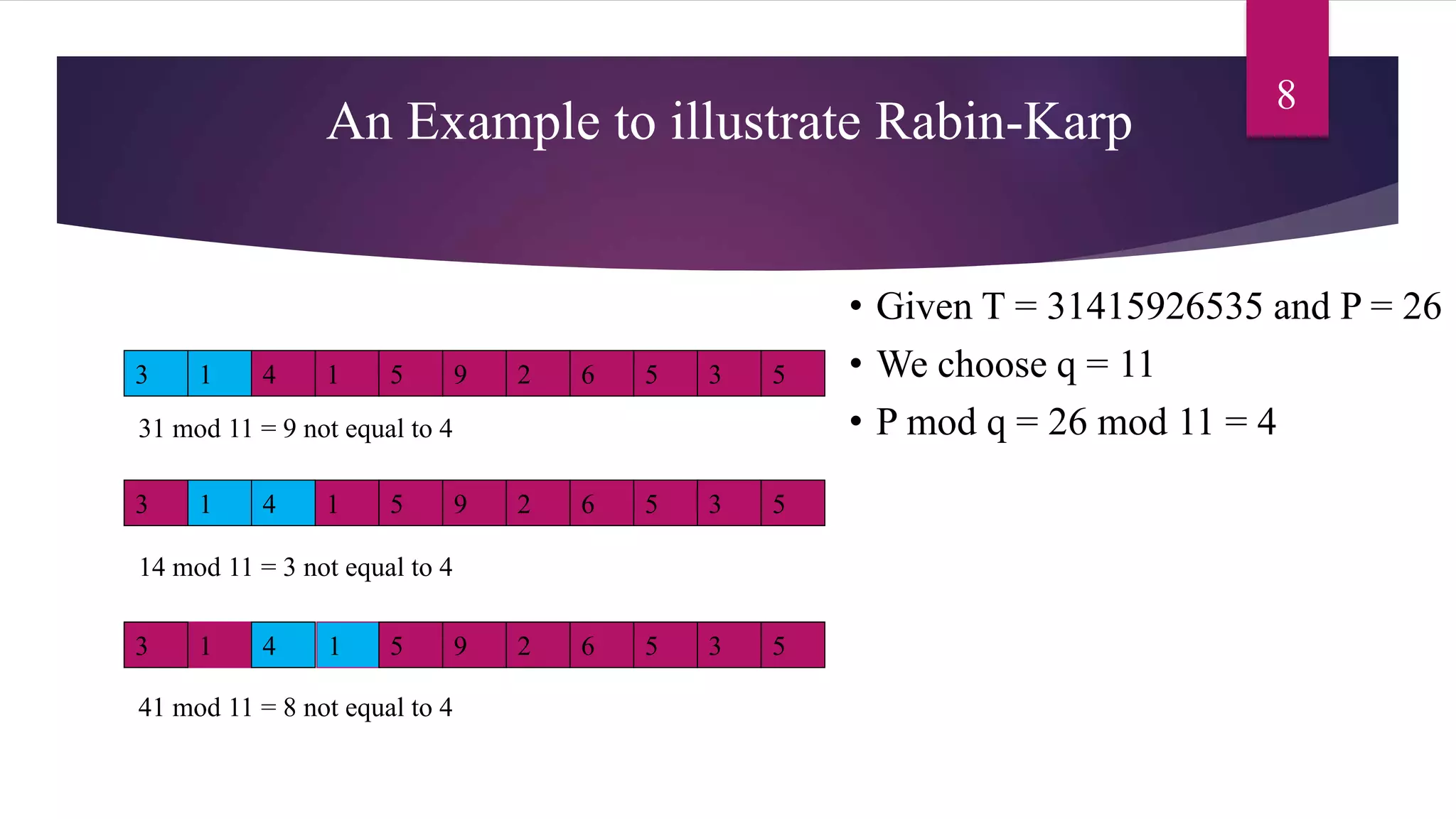
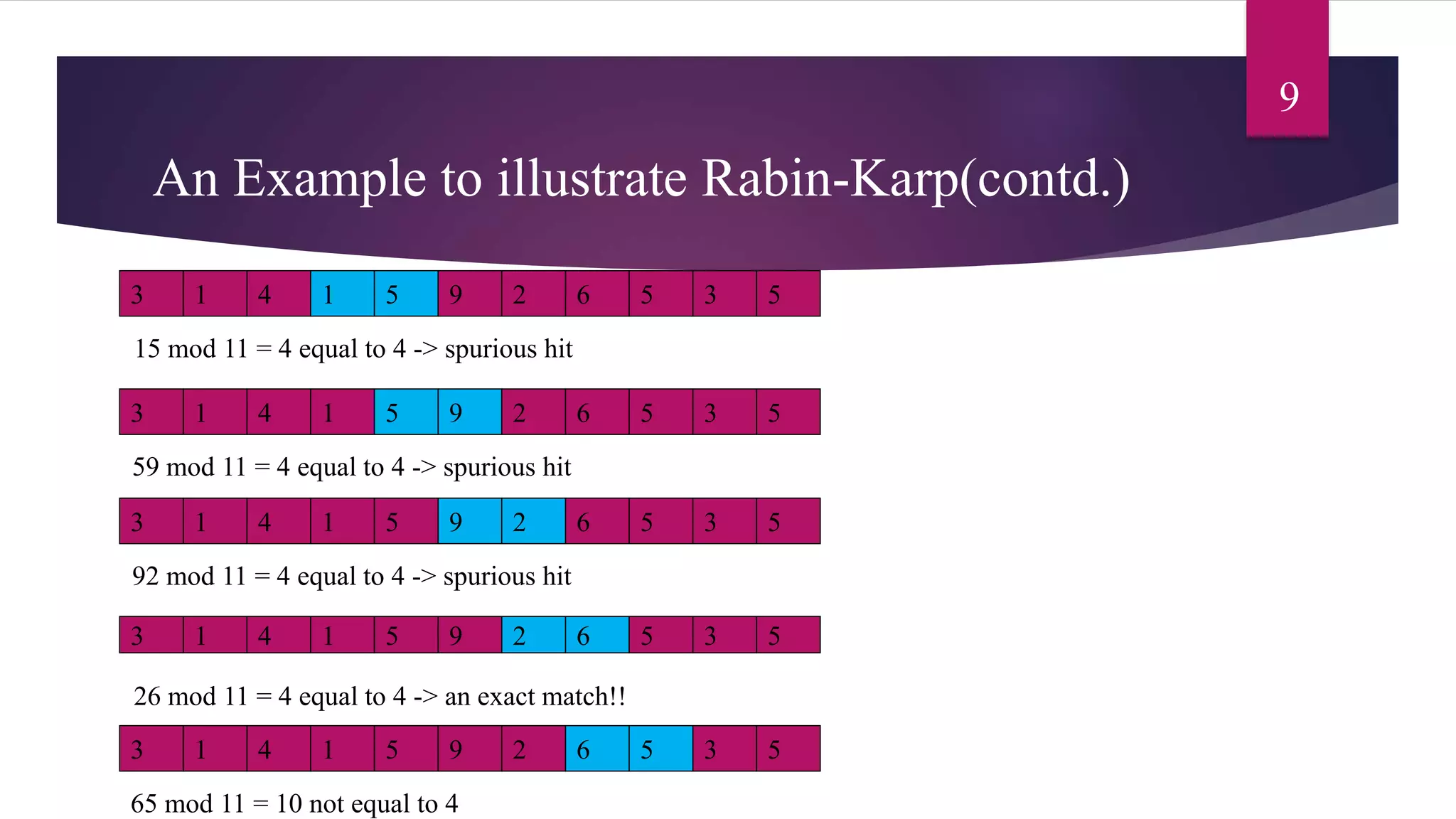
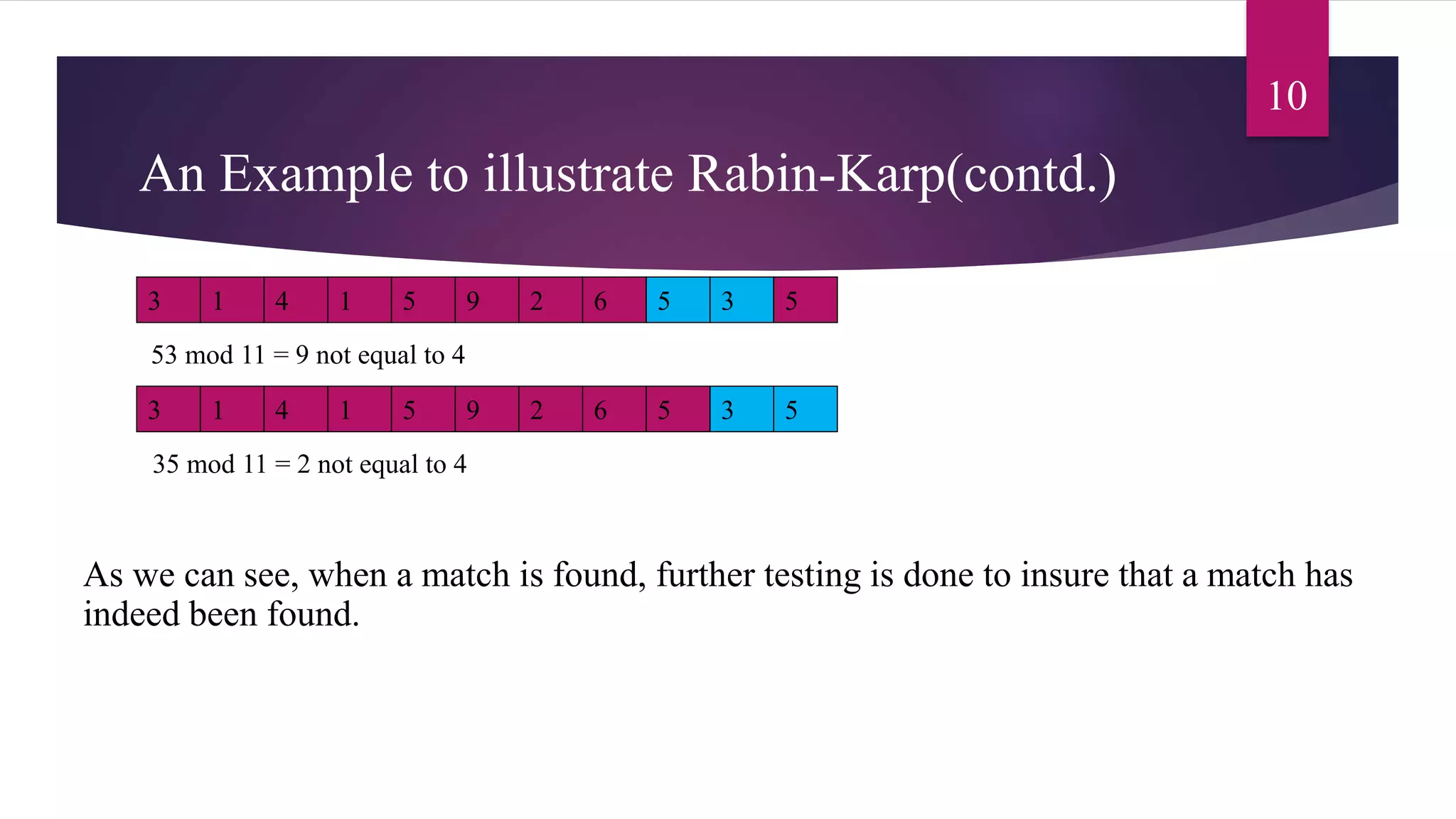
![Complexity Analysis 11
RABIN-KARP-MATCHER(T,P,d,q)
1. n = T.length
2. m= P.length
3. h = d^(m-1) mod q O(1)
4. p = 0
5. t0 = 0
6. for i = 1 to m O(m)
7. p = (dp + p[i]) mod q
8. t0 = (dt0 + p[i]) mod q
9. for s = 0 to n-m O((n-m+1)m)
10. if p == ts
11. if P[1 . . . . M] == T[ s+1 . . . . s+m]
12. print “Pattern occurs with shift” s
13. if s<n + m
14. ts+1 = (d(ts – T[s+1]h)+T[s+m+1]) mod q](https://image.slidesharecdn.com/sabiyarabincarpalgorithm-171228213732/75/Rabin-Carp-String-Matching-algorithm-11-2048.jpg)
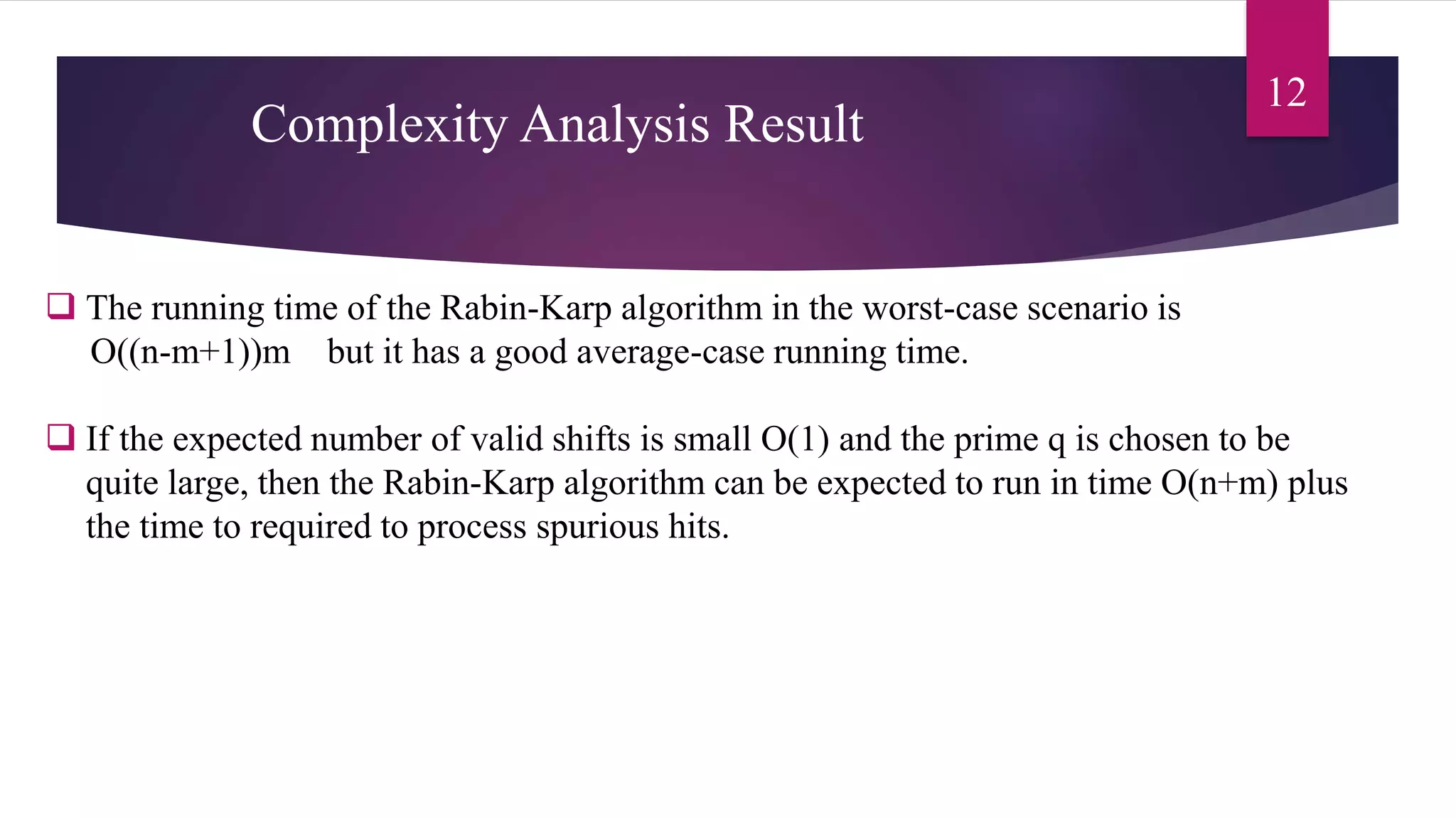
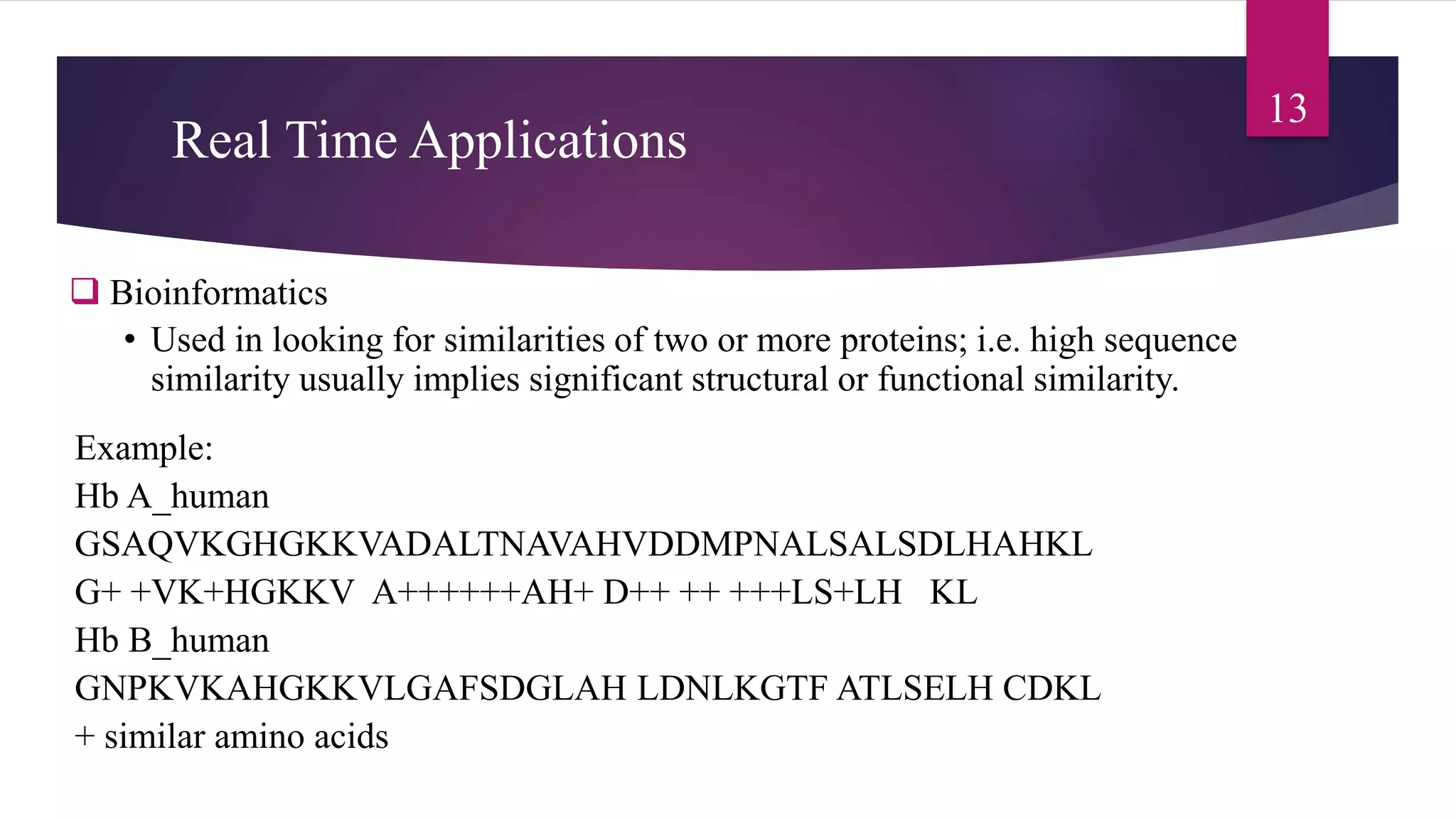
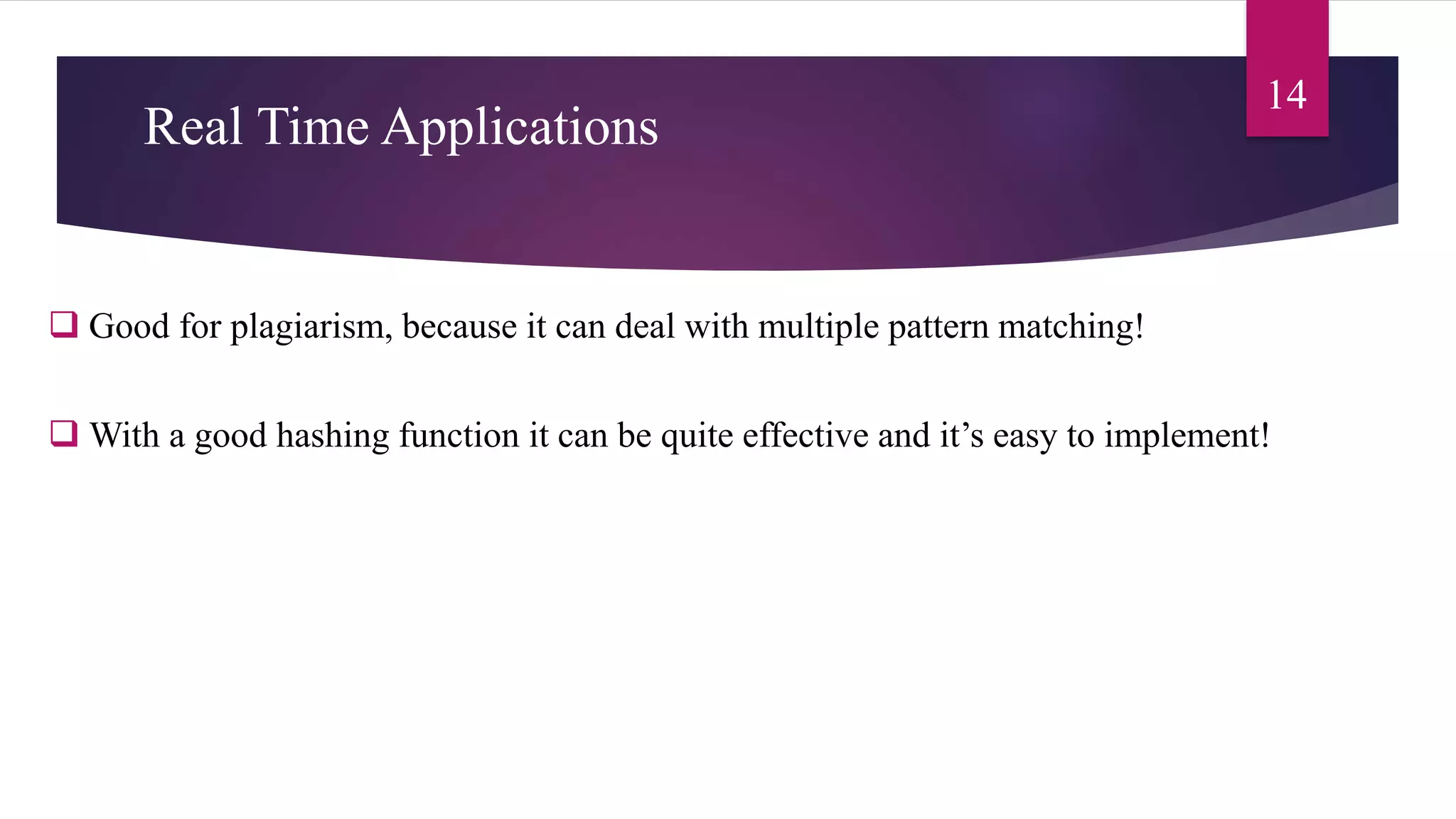
![References
15
.
Cormen, Thomas S., et al. Introduction to Algorithms. 3rd ed. Boston: MIT Press, 2
Go2Net Website for String Matching Algorithms
[www.go2net.com/internet/deep/1997/05/14/body.html]
Yummy Yummy Animations Site for an animation of the Rabin-Karp algorithm at work
[www.mills.edu/ACAD_INFO/MCS/CS/S00MCS125/String.Matching.Algorithms/animations.html]
National Institute of Standards and Technology Dictionary of Algorithms, Data Structures, and Problems
[hissa.nist.gov/dads/HTML/rabinKarpAlgo.html]
Multi-Pattern String Matching with Very Large Pattern Sets
[https://www.dcc.uchile.cl/~gnavarro/workshop07/lsalmela.pdf]](https://image.slidesharecdn.com/sabiyarabincarpalgorithm-171228213732/75/Rabin-Carp-String-Matching-algorithm-15-2048.jpg)
